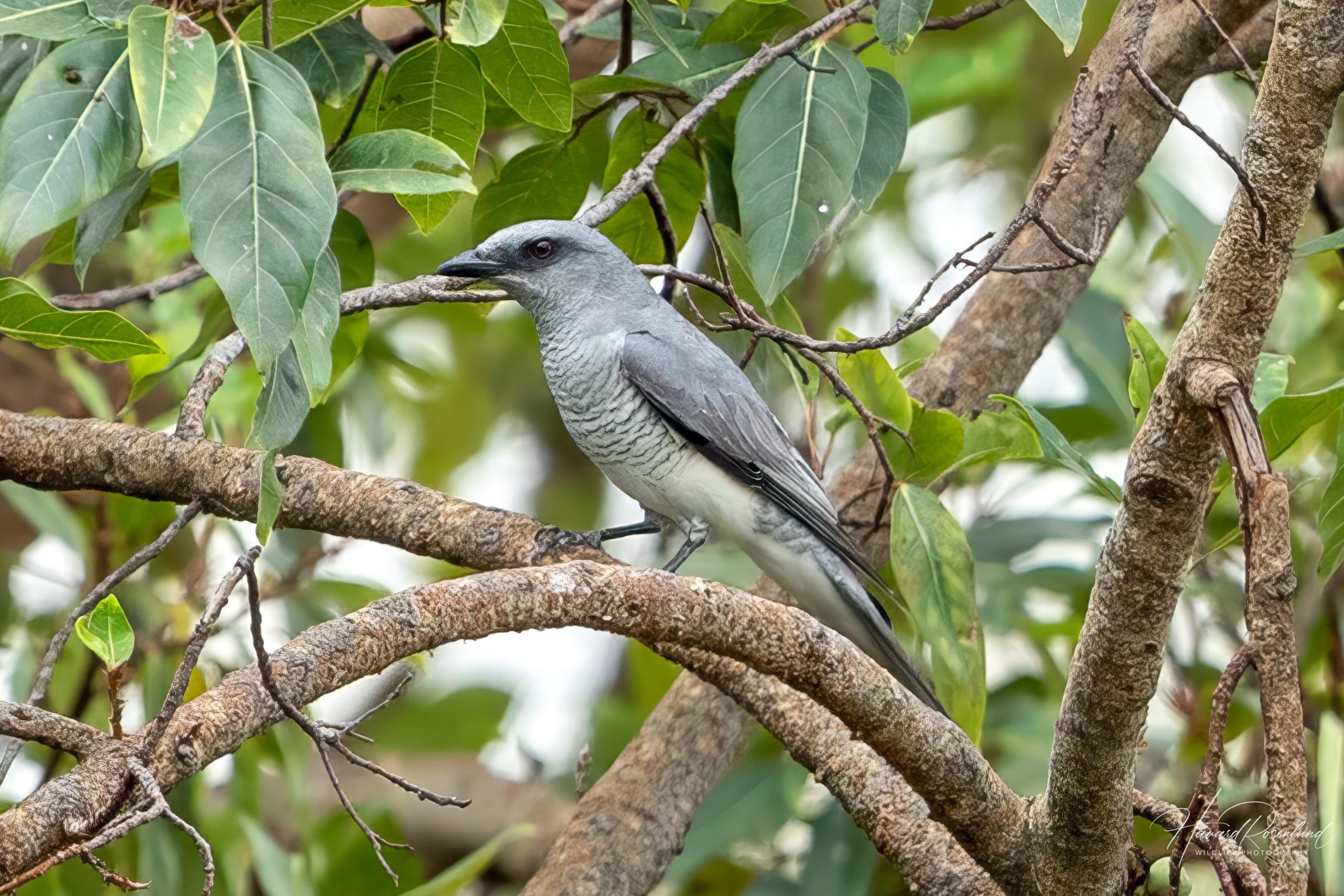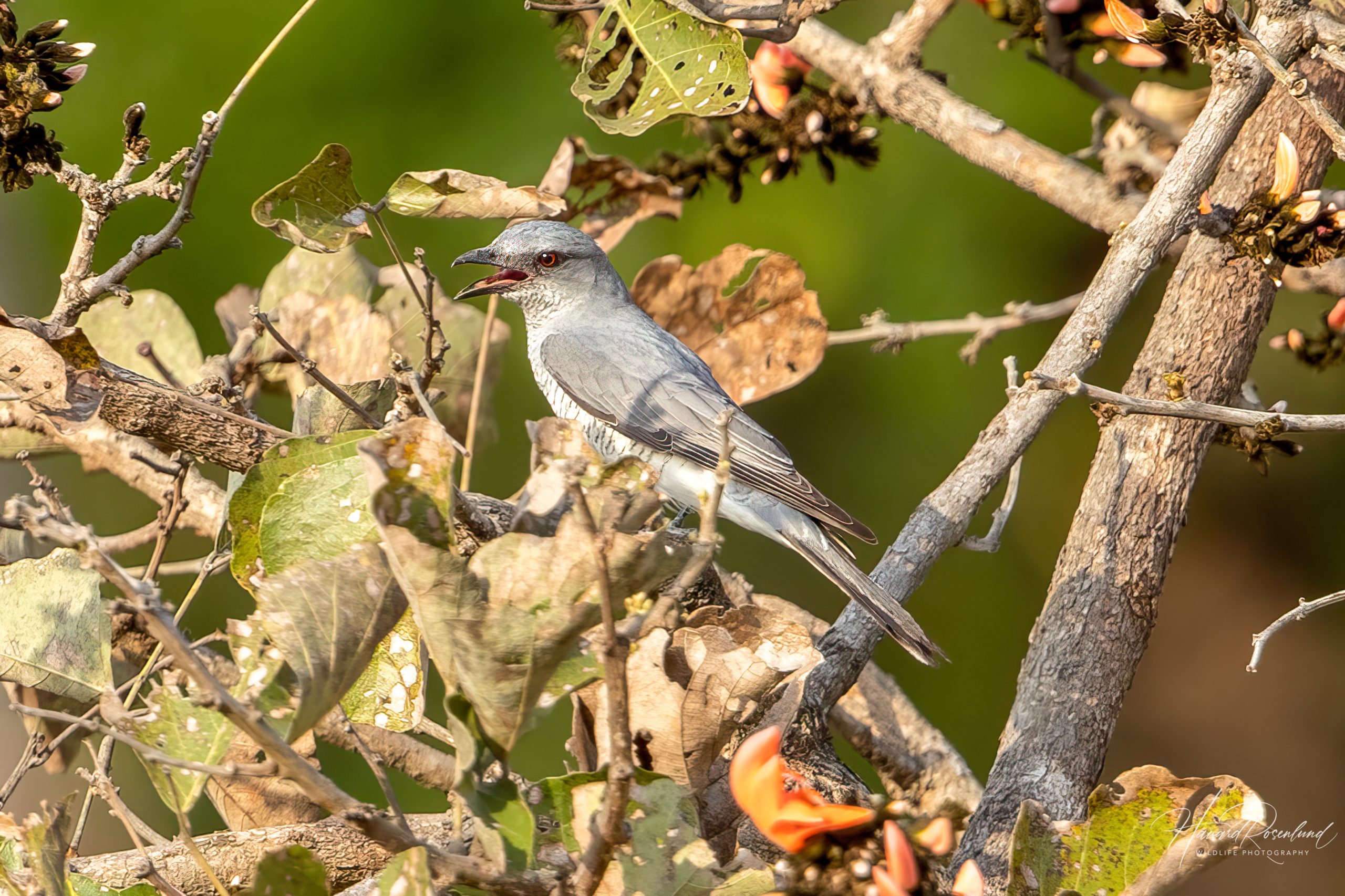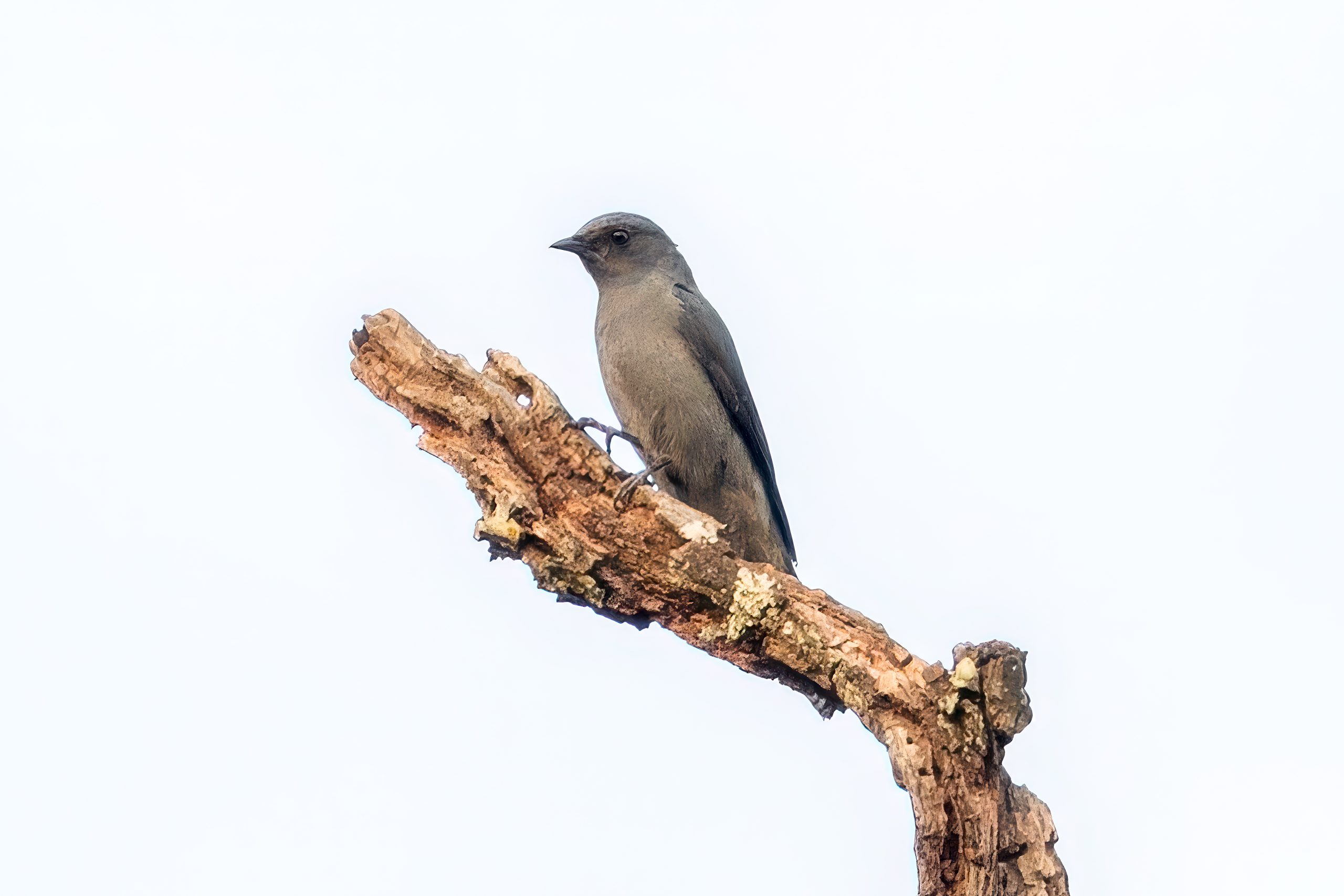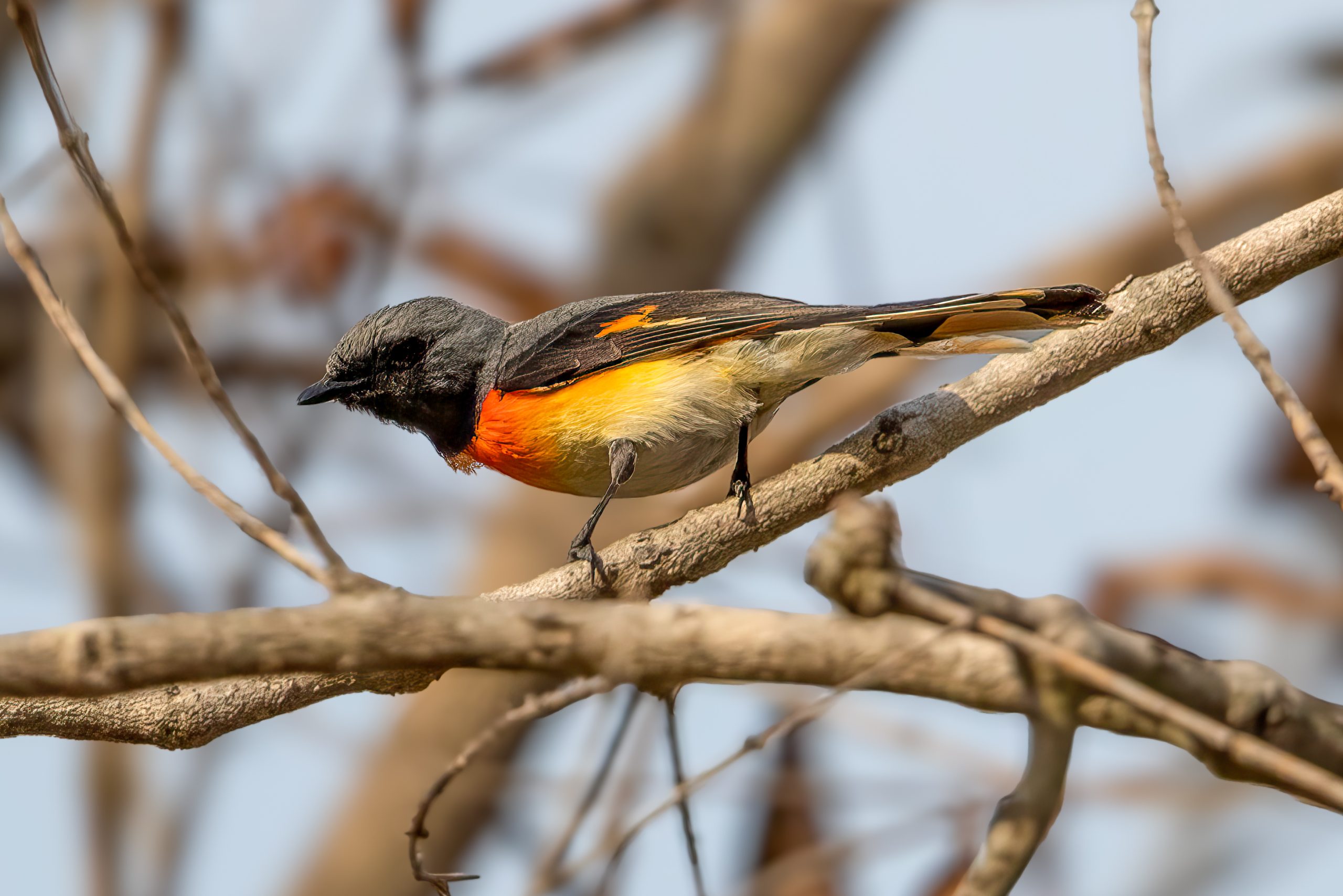Description
The large cuckooshrike (Coracina macei) is a medium-sized passerine bird found predominantly in South and Southeast Asia, ranging from the Indian subcontinent to parts of Southeast Asia, as well as southern China. It typically measures around 30-34 cm (11.8-13.4 in) in length, including its relatively long tail. This bird is characterized by its sturdy build, grey plumage with a slight bluish tinge, and a black eye stripe in males. The underparts are paler (and barred in some subspecies), and the beak is robust and slightly hooked, ideal for its varied diet.
The large cuckooshrike can be distinguished from similar species by its larger size and the lack of a black wings found in the black-winged cuckooshrike (Lalage melaschistos). One notable taxonomic uncertainty involves its relation to the Javan cuckooshrike (Coracina javensis), with some authorities suggesting they may be conspecific due to similarities in their vocalizations and plumage. Some also separates the large cuckooshrikes in India and Sri Lanka into a separate species, the Indian cuckooshrike.
Diet & habitat
This versatile bird is commonly found in a variety of wooded habitats, including deciduous and evergreen forests, as well as plantations and gardens in urban areas. It is a highly adaptable feeder, with its diet primarily consisting of insects and other arthropods, which it skillfully captures by foraging through the foliage and occasionally engaging in aerial sallies. It also consumes fruits and berries, which supplement its diet, especially when insect prey is less abundant.
Nesting
The breeding season for the large cuckooshrike varies geographically but generally falls between April and August. During this time, pairs engage in cooperative nesting behaviors. The nest is typically a shallow cup made of twigs, grass, and other plant materials, placed high in the canopy to avoid predators. The female lays 2-4 eggs, which are incubated for about 14-16 days. Both parents share the responsibility of feeding and caring for the chicks, which fledge approximately 16-20 days after hatching.
Status
The large cuckooshrike is currently classified as least concern on the IUCN Red List, where it is split into the Indian cuckooshrike as one species and the large cuckooshrike including Javan cuckooshrike as another species. Despite its favorable status, it faces threats from habitat loss due to deforestation and urbanization, which can lead to declines in local populations.








